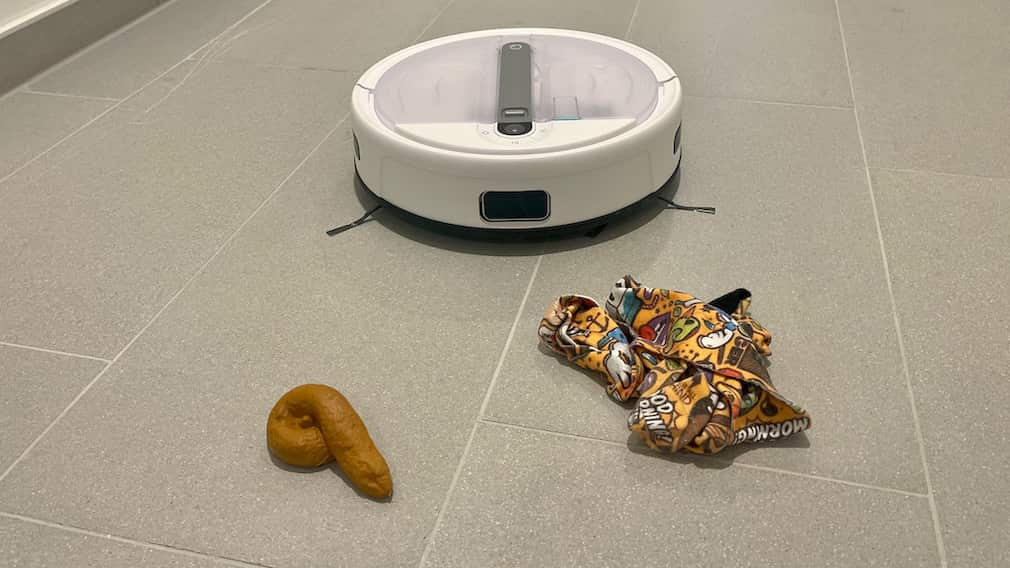Compact and affordable: The Yeedi Cube including dock wants to offer everything without escalating in terms of space or price. The test shows whether it works.
Current luxury vacuum and mop robots clean thoroughly, but they have one problem: they are expensive, and a station that is often included takes up a lot of space. With Yeedi everything is a little smaller: the price remains reasonable and the dock is comparatively compact. But is the cleaning experience still good? Where are there compromises? This test provides the answers.
Vacuum cleaner and dock: A courageous compact class
If a vacuum and mopping robot comes with a station, it’s practical because it relieves the owner of annoying work steps that have to be done before and after the cleaning tour: Nobody bothers to empty the dust box, fill up the mopping water, rinse and close the wipers dry. But all of this takes up a lot of space and often makes the dock and water tanks a real clutter. Yeedi also wants to offer comfort, but keep the Cube station nice and compact. In addition to a 2.1 liter dust bag for temporarily storing the dirt brought home, it only contains a small tank for 1.2 liters of dirty water.

The dock doesn’t provide the fresh water; it’s shouldered by the Yeedi robot itself: on top of the device sits a transparent tank in a UFO design, which isn’t too thick and holds at least one liter. The Yeedi Cube, which is around 10 centimeters high, uses this to moisten its wipers and rinse them thoroughly after cleaning. It’s funny how the robot bubbles under the hood. However, the tank ensures a shifted center of gravity. The result: When driving and braking, the device sometimes jerks because the water “oscillates”. After all, the tank can be easily removed at the push of a button and handle and can be quickly filled under the tap.
Yeedi Cube Review: The suck

Apart from the XXL water supply that comes with you, the Yeedi robot offers few surprises. When navigating, the surveillance camera uses camera-based SLAM technology. There are lasers at your side for orientation. Nevertheless, this solution does not come close to a reliable lidar sensor system with a laser tower and all-round view in terms of precision and the detection of rooms, walls and edges.
Manufacturers always use increased suction power as a selling point – including Yeedi, who attest to the Cube 5100 Pascal. What the vacuum cleaner brings to the floor only becomes apparent in the test: for every 100 grams of dirt that has to be swallowed on the test area, the Yeedi brings home an average of 88 grams. A good result, although the top vacuum cleaners from other manufacturers collect significantly more. This is also due to the navigation not being fully developed. Although the Yeedi can get to edges well with two rotating side brushes, it tended to miss some areas in the test or roll over the dirt too quickly.
Yeedi Robot: Mopping

The Cube is more thorough when wiping. This is done by a mop attached to the rear of the robot, which scrubs the floor with a little pressure and a lot of momentum. Yeedi speaks of 2,500 vibrations per minute, which are intended to loosen stains and absorb liquids. This worked well in the test, even though a second round of cleaning was often necessary for heavy dirt. Practical: When driving on a carpet, the Cube automatically raises its mop by up to 8 millimeters. This is enough to ensure that the device does not get caught on the edge of the carpet or submerge the carpeting under water. After wet cleaning, the Yeedi rubs his wiping cloth clean in the station and rinses it with plenty of water. This happens on a base plate that can be removed for cleaning. To ensure that nothing gets moldy or smelly, the dock blows the mop dry with 40 degree warm air.
Recognizing obstacles: A little careless
When it comes to discovering objects lying around, the Cube relies primarily on its front camera. If socks or plastic dog poop appear right in front of its nose, the robot reliably detects this and initiates an evasive maneuver. If he flanks the obstacles to the side, they are not safe from the Yeedi. This also applies to very flat objects: a cell phone cable that the smart helper rolls over or wraps around its cleaning roller, for example, remains under the radar. The Cube doesn’t always find its way back to the station with determination, but then it parks quickly. The Cube is also not squeamish when it comes to noise levels: when vacuuming, it turns up to 65 decibels; the suction function in the dock could disturb the neighbors or wake up the children late in the evening at 85 decibels. And drying the mop isn’t exactly quiet at just under 50 decibels.
Yeedi Cube: test conclusion and price
Lots of cleaning talent and comfort, compactly packed and inexpensive – the Yeedi Cube is aimed at price-conscious cleaning devils who don’t want to do without a dock with a suction function and a smart water supply. The suction and wiping performance does not come close to top models from Roborock, Ecovacs or Dreame, and there is also room for improvement when it comes to navigation and obstacle detection. However, the competition’s luxury vacuum cleaners often cost twice as much or even more.
The Yeedi Cube is regularly available for 700 dollars, but is always on offer. Currently (as of October 2023) the price on Amazon is reduced to 560 dollars as soon as the coupon tick is ticked.

